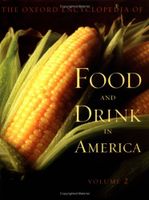Advertisement
History of Preserves
Appears in
Published 2004
From antiquity, preserves were made from fruits wherever there was honey or sugar, the essential preservatives. It was not until the medieval period and the introduction of sugar to Europe that the kinds of preserves later known in America were developed. Among the earliest were a series of quince jams, jellies, syrups, marmalades, and preserves. The quince (an applelike but very sour fruit), sugar, and rose or perfume flavorings were derivatives of still earlier Middle Eastern preparations, exotic to English palates at the time. In addition to its appealing flavor, quince had the benefit of contributing its own pectin, the gelling factor found in the pulp surrounding its seeds. Many preserves also were based on available orchard fruits, berries, currants, and gooseberries. As many of these lacked their own pectin, long cooking and the addition of high-pectin fruits or processed gelatinous animal products (isinglass, hartshorn, or calves’ feet) were used to achieve the desired thickening.


